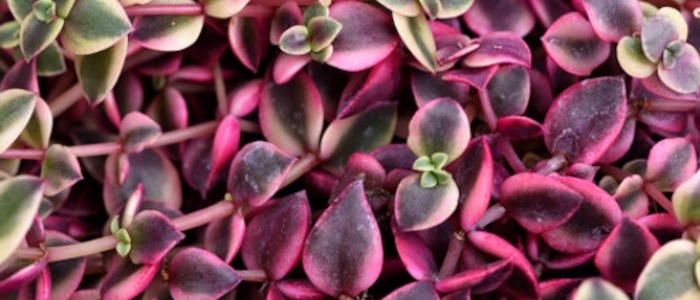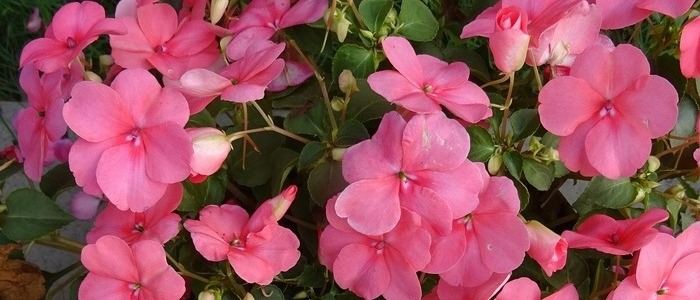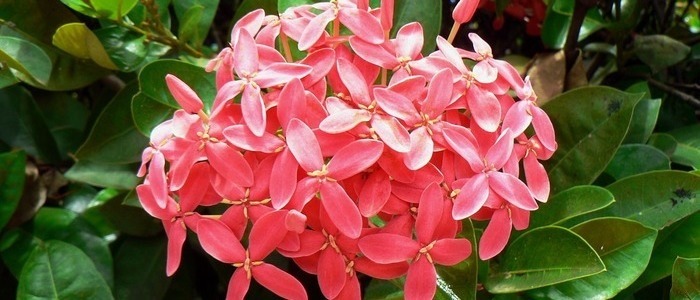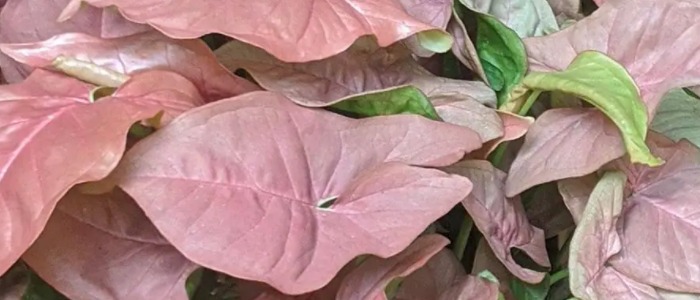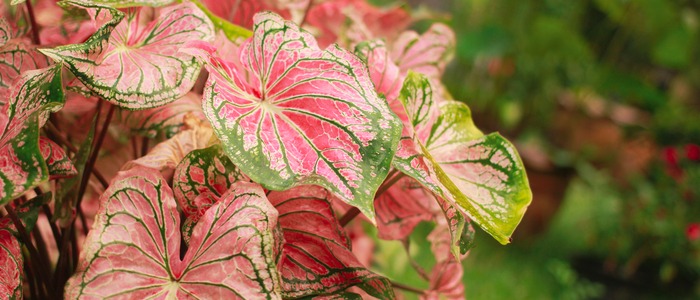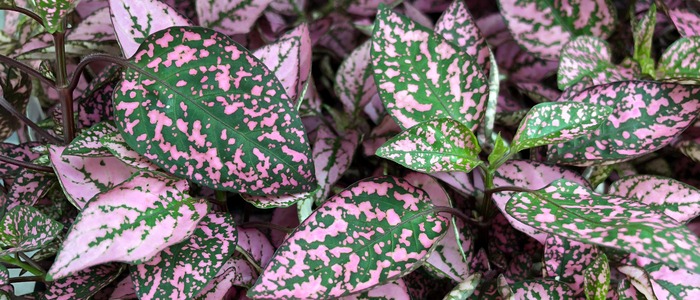Who doesn’t want to have an indoor plant that not only is pretty but also adds a distinctive look to the home décor? Well, all of us do. And this is why the Fittonia Albivenis gained popularity, especially with its dark green leaves contrasted with a variety of vein colors, including pink, red, green, and white. This plant is also popularly known as the Nerve Plant, Net Plant, or Mosaic Plant, and all of these nicknames have originated because of its colorful veins.
This beauty is a native plant of Peru and can look stunning both in the wild as well as an indoor houseplant. The plant is a creeper that is low-growing and is therefore popularly grown in bottle gardens or terrariums. Although the plant doesn’t grow much tall (around 6 inches), its leaves have a trailing habit, due to which it spreads almost up to 18 inches at times. This plant doesn’t grow any flowers, especially when it is grown indoors. When the plant does tend to bloom, the flowers are generally insignificant with yellowish or reddish-white spikes.
This plant can turn out to be tricky and temperamental to be grown indoors. So if you intend to buy this plant for your new home, read, and what to know in detail about the Fittonia Albivenis, then this article is just for you.
Pink Frittonia Plant Frequently Asked Questions
Does the pink Fittonia plant like sun or shade?
The pink Fittonia plant doesn’t thrive well in direct sunlight and prefers indirect bright sunlight. This is why placing them near north-facing windows will work perfectly for them. This plant also tends to thrive well when fluorescent lights are used.
How often do you water the pink Fittonia plant?
Applying just the right amount of water to the pink Fittonia plant might seem like a tricky task and a challenge. This is because Fittonia can collapse due to moisture deprivation. Although it does tend to recover quickly once watered, this repeated process can take a toll on the health of the plant.

Pink Fittonia Plant Care
When growing the nerve plant indoors, use a commercial peaty potting mix and make sure the plant is constantly being kept moist. Constantly misting the plant is a great idea to maintain a high level of humidity. You can also grow this plant in a tray that is filled with water and pebbles to make sure the plant gets enough moisture always.
Most growers prefer growing these temperamental but beautiful plants in covered gardens or terrariums where they can get all the diffused light and high humidity these plants need to grow. Below are mentioned some points to keep in mind when taking care of the Fittonia Albivenis:
- Soil – this plant needs the standard regular potting soil that should have a base of peat moss. Make sure that the soil should drain well while being able to retain enough moisture at the same time.
. - Temperature – usually, this plant requires a temperature of 70 degrees F, but temperatures between 60 to 80 degrees F also will work out easily.
- Light – the nerve plant is a tropical plant that naturally prefers bright shades and humid conditions. The plant doesn’t thrive well in direct sunlight and prefers indirect bright sunlight. This is why placing them near north-facing windows will work perfectly for the plant. This plant also tends to thrive well when fluorescent lights are used.
. - Fertilizer – this plant needs to be fed weekly during the growing period with a liquid fertilizer that is specially made for tropical plants. Also, make sure that the fertilizer is of half strength.
- Humidity – the nerve plant prefers humid conditions that are similar to the conditions in rainforests. This is why to prevent drying out; you need to regularly mist them. During winters or if you live in dry areas investing in a room humidifier can turn out to be helpful. This is why growing the Fittonia Albivenis in bottle gardens or terrariums is a great idea, as these are naturally moist places perfect for the plant.
- Water – watering this plant just the right amount might seem like a tricky task and a challenge. This is because the nerve plant can collapse due to moisture deprivation. Although it does tend to recover quickly once watered, this repeated process will only end up taking a toll on the health of the plant. On the other hand, if the plant is left in water for too long, the leaves will become limp and yellow.
Pink Fittonia Plant Propagation
Propagating the nerve plant is fairly easy and can be done by using stem cuttings and then propagating them in soil or water. Although the Fittonia Albivenis can be propagated through seeds, the process might seem difficult and slow, especially for beginners. This plant can be propagated easily, provided the plant receives enough humidity, bright indirect sunlight/light, and regular moisture.
There might be several reasons to take stem cuttings. You might want to gift your close friends or family this beautiful plant, or you might just be looking to expand your collection. Or simply the original plant looks unhealthy and tired, and you want to get a fresh one. Whatever the reason might be, read on to know more about how you can propagate these plants.
Spring is the perfect time to propagate the nerve plants if you are looking for new plants. You can take cuttings anytime during the warm months, but it is during spring that the plant pushes out fresh growth, which is perfect for propagation. If you are looking for cuttings, make sure that you trim off tip cuttings of at least 4 inches, and in the case of stem cuttings, trim them into longer sections. Remember that each section needs to have few growth nodes on them. Now you just need to plant them in moist and fresh soil mix horizontally or at an angle.
The cuttings need to be kept in a warm setting of around 85 degrees F and then draped with a piece of plastic cover that needs to be perforated to maintain high levels of humidity. As soon as the stem starts setting down roots, remove the perforated plastic cover.
Pruning The Pink Fittonia Plant
Nerve plants under the right conditions tend to grow quickly. If left unattended, these plants tend to become leggy and tall, which ultimately ends up looking extremely unattractive. This is why pruning is so important to make your houseplant look aesthetically pleasing again.
Fittonia Albivenis can be pruned like you prune most other houseplants. All you need is a pair of sharp shears to cut the plant to the height you desire. Remember to use sharp shears instead of scissors because this plant can’t handle much stress, so making a clean cut is extremely important. Also, make sure you cut off as much as you want in one go, preferably above a joint or leaf node.
Common Problems That Can Affect the Pink Fittonia Plant
The Pink Fittonia Plant, also known as the nerve plant, is a beautiful and delicate houseplant. However, it is not immune to common pests and problems. One of the most common issues it faces is infestations of spider mites.
These tiny pests thrive in warm and dry conditions, sucking the sap from the plant’s leaves and causing them to yellow and wither. Another problem that can affect the Pink Fittonia Plant is root rot, which occurs when the roots are constantly sitting in waterlogged soil.
This can lead to wilting, yellowing leaves, and eventually, the death of the plant if not addressed promptly. To prevent infestations of spider mites, it is recommended to regularly inspect the Pink Fittonia Plant and keep the humidity levels moderate. Introducing natural predators like ladybugs can also help control the population of these pests.
As for root rot, it is crucial to ensure proper drainage by using well-draining soil and pots with drainage holes. Avoid overwatering the plant and allow the soil to dry out slightly between waterings to prevent the roots from becoming waterlogged.
Additionally, it is important to avoid placing the Pink Fittonia Plant in direct sunlight, as this can increase the risk of root rot. Instead, place the plant in a location with indirect or filtered sunlight. Regularly trimming and pruning the plant can also help improve air circulation and prevent moisture buildup, further reducing the chances of root rot.
By following these preventive measures and taking appropriate action, the Pink Fittonia Plant can thrive and remain healthy for a long time.
Other Pink House Plants
